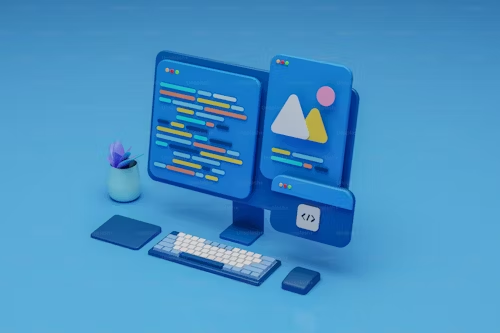
In today’s digitally connected world, software is the backbone of almost every industry. From streamlining business operations to enabling communication across the globe, touches nearly every aspect of our lives. But what exactly , and why is it so crucial? This article will explore the essence , its types, the development process, and future trends shaping the tech industry.
What Is Software?
To begin with, software refers to a collection of instructions or programs that enable hardware to perform specific tasks. Unlike physical hardware, is intangible, residing in the memory of your device. It acts as the bridge between the user and the machine, enabling functionality through a set of coded commands.
Types of Software
There are several types , each serving a unique purpose. Understanding these categories will help you grasp the diverse applications in our lives.
1. System Software
System software acts as the foundation of any computer system. This includes operating systems like Windows, macOS, and Linux, as well as utility programs that help manage hardware.
2. Application

Next, application software refers to programs designed for end-users. Examples include word processors, web browsers, and mobile apps like WhatsApp and Spotify. These applications simplify tasks, from sending emails to editing videos.
3. Development

For developers, programming languages and frameworks fall under development software. Tools like Python, Visual Studio, and GitHub assist in writing, testing, and maintaining code.
4. Middleware
Middleware serves as the intermediary that allows different applications or software systems to communicate. For example, an e-commerce platform’s payment gateway often relies on middleware to process transactions securely.
The Development Process
Developing software is a structured journey. Although methods like Agile, Waterfall, and DevOps differ, the fundamental stages remain consistent. Here’s a quick overview:
1. Planning
Initially, developers and stakeholders identify the problem and define requirements. Clear objectives and timelines are crucial at this stage.
2. Design
Next comes designing the software architecture. This stage involves creating wireframes, prototypes, and choosing the right tools and platforms for development.
3. Coding

Then, developers write the code using programming languages such as Java, Python, or C++. This step translates design blueprints into functional.
4. Testing
Before deployment, undergoes rigorous testing to ensure it’s free from bugs and meets user expectations. Techniques like unit testing, integration testing, and system testing are essential.
5. Deployment and Maintenance
Finally, the software is launched and becomes accessible to users. Post-deployment, developers continuously monitor and update to fix bugs, improve performance, and add features.
For more detailed insights into modern development practices, visit Atlassian’s Agile Development Guide.
Future Trends in Development
As we move forward, the software landscape is evolving at a rapid pace. Below are some emerging trends shaping the future of the industry.
1. Artificial Intelligence (AI)
AI-powered software is revolutionizing fields like healthcare, finance, and education. Tools like OpenAI’s ChatGPT and Google Bard demonstrate the growing sophistication of AI.
2. Low-Code and No-Code Platforms
Platforms like OutSystems and Bubble are making development accessible to non-programmers. These tools allow users to create apps through drag-and-drop interfaces.
3. Cybersecurity

With the rise in cyberattacks, robust security software has become indispensable. Solutions like Norton, McAfee, and cloud-based tools like Zscaler are crucial for safeguarding data.
4. Quantum Computing
Although still in its infancy, quantum computing promises unparalleled processing power, leading to software capable of solving complex problems.
For more on how quantum computing will redefine , explore IBM’s Quantum Computing Research.
Why Software Matters
In conclusion, software is much more than lines of code. It’s the invisible force driving innovation, connecting people, and automating processes. Whether you’re a business owner or a casual user, understanding software’s basics and its potential can unlock new opportunities.
As technology advances, staying informed about trends and best practices will keep you ahead of the curve. For regular updates and expert opinions, bookmark TechCrunch and Wired.
By grasping the fundamentals of software and its development, you’re better equipped to navigate our increasingly digital world. So, embrace the opportunities offers and prepare for a future where it plays an even greater role in our lives.




Pingback: Top 10 Open-Source CRM Software for 2025
Pingback: Why Cloud-Based Accounting Software Is a Game-Changer